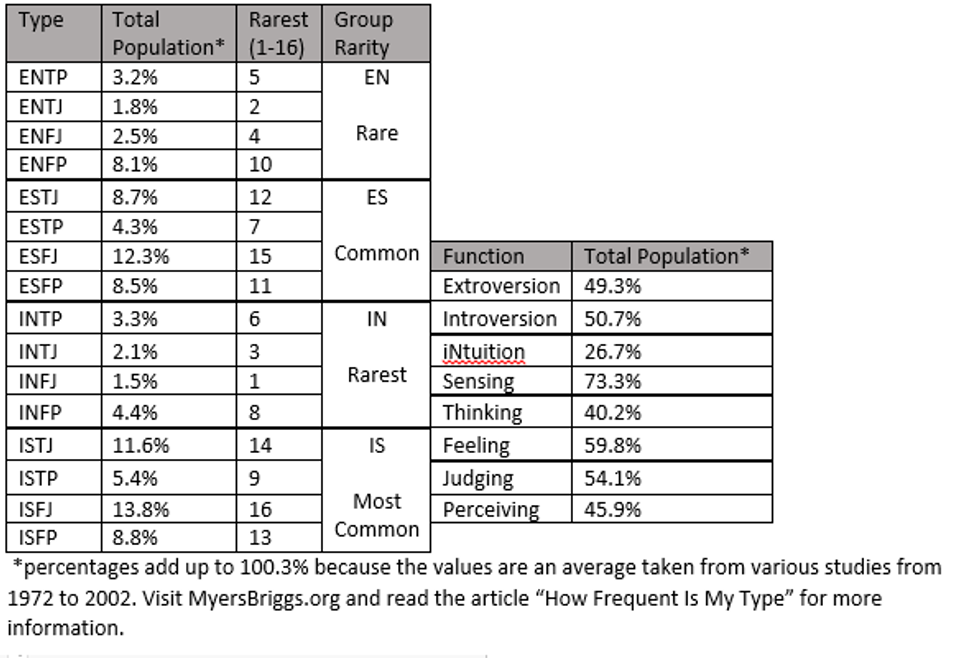We know we’re all unique little snowflakes, but that usually doesn’t stop us from trying to find people just like us. We want to know that we aren’t alone, that there are other people out there who think and act the same way we do. It can be lonely being one of a kind. It’s lucky, then, that MBTI and Jungian enthusiasts have completed various studies to try and calculate just how many more of “you” there are in the world.
Personality frequencies change on a country by country basis, as some countries have societies that encourage certain personality types. In the United States, Sensing and Feeling are some of the most common traits. Below is a layout of type frequency information taken from the United States.
Personality Type frequency also changes based on gender. Women are more likely to be Feelers than men, which can explain societal expectations and “gender roles” in the United States.
Many MBTI enthusiasts have also attempted to use personality theory as a way to predict compatibility between people. And in some cases, the theory can explain why you get along with that super nice INFJ but can’t stand talking to your ISFJ classmates. Just like using the instrument to understand yourself, using the instrument to understand your relationships is also tricky. Past relationships, personal preferences, our environment, and our conscious choices all shape who we build relationships with. Marriages will work without being vetted by a personality junkies. That being said, there is a bit of compatibility theory we can work off of to better understand our tendencies.
In any studies done about compatibility, the types are usually ranked with labels like “Usually an Ideal Match” or “Could Work”. The rule of thumb seems to be that two people will get along best if their middle two letters match, and their ending letters differ. For example, an ISTJ and an ESTP would get along, at least according to this theory. Sometimes types with differing third letters are taken into account as well. The ISTJ might also get along with an ESFP. And more often than not, the party in question will also get along with someone of the same type or the aforementioned types in the opposite I/E category. So the ISTJ would be predicted to get along with ESTP, ESFP, ISTJ, ISTP, ISFP, and ESTJ. That’s quite a few options. There are many charts that have compiled information about compatibility between types, but little of it has been created with source material or can be traced back to its original source.
Thank you for sticking with me on this series in personality typing, and I wish you a happy holiday season.













































